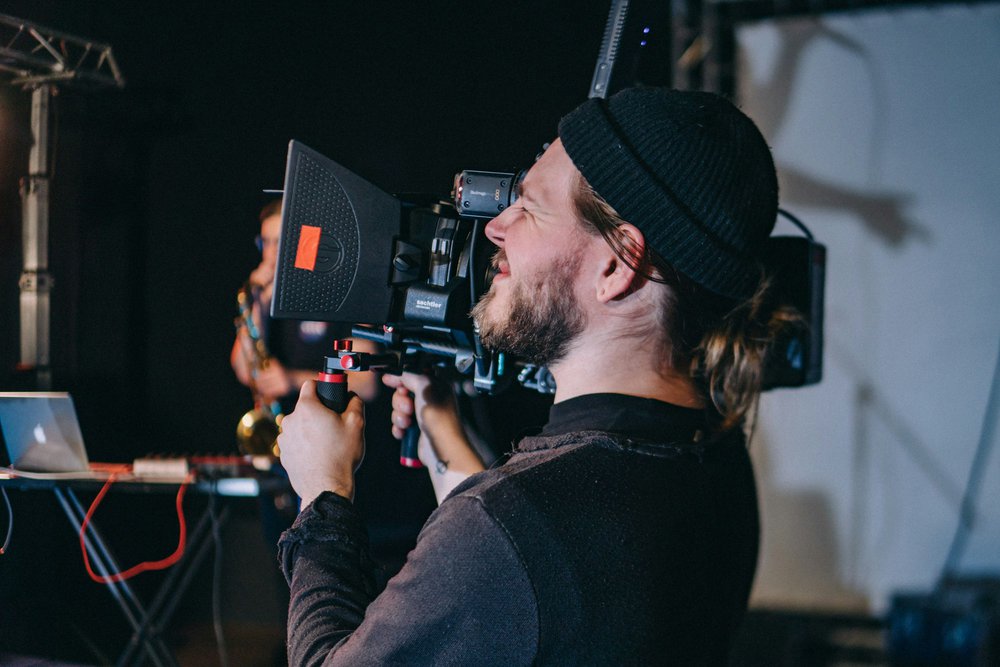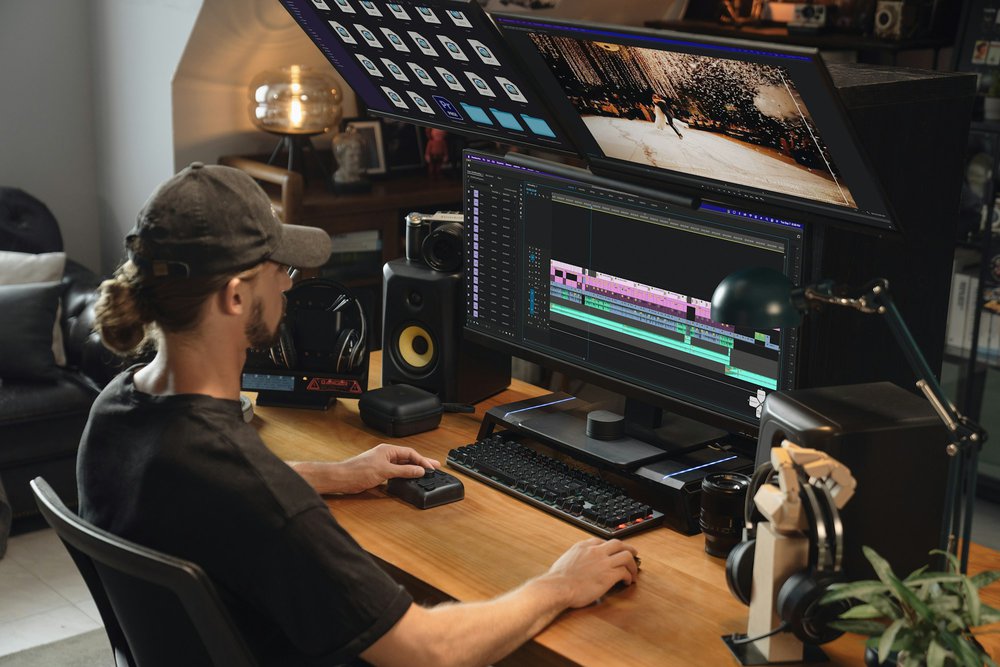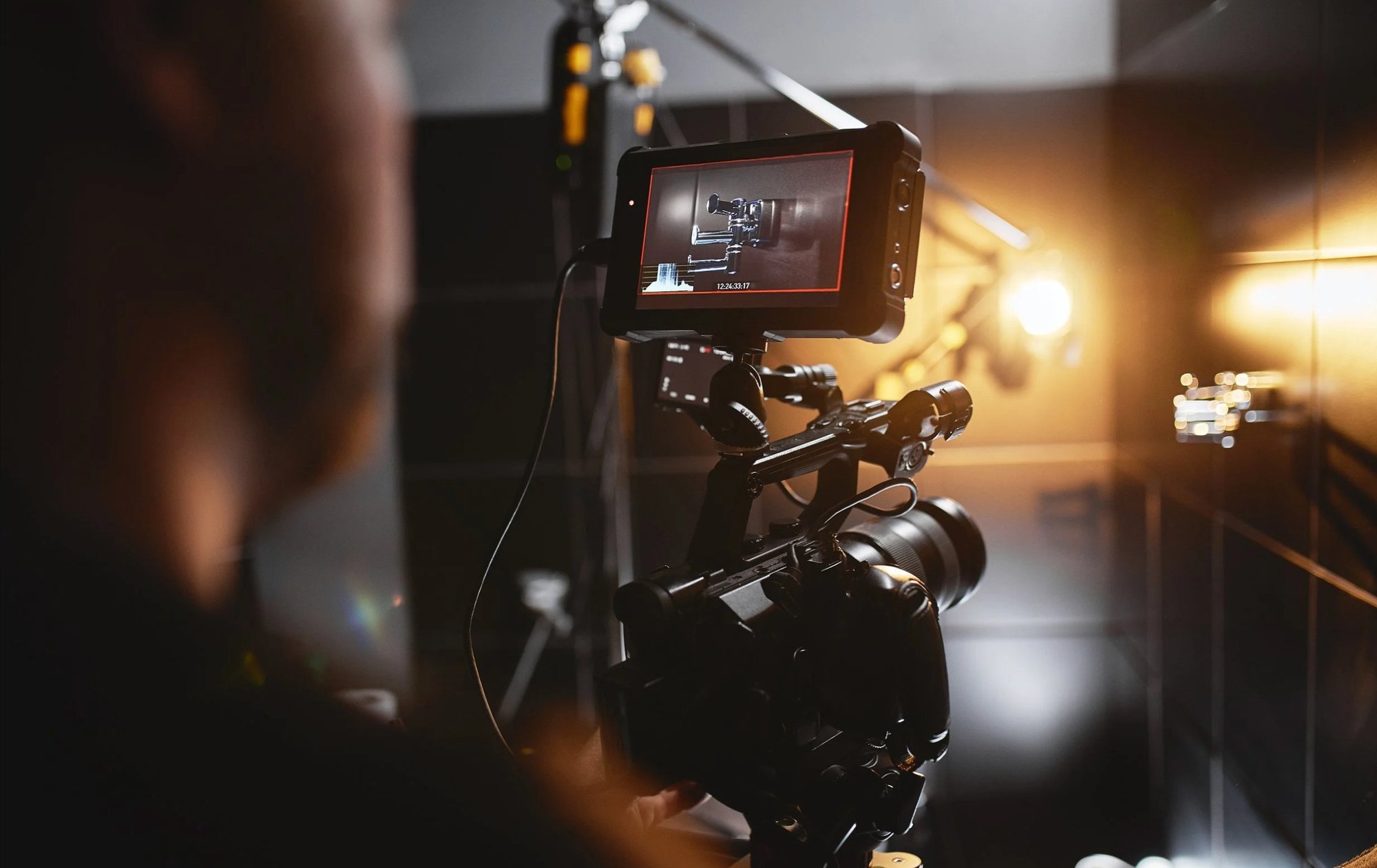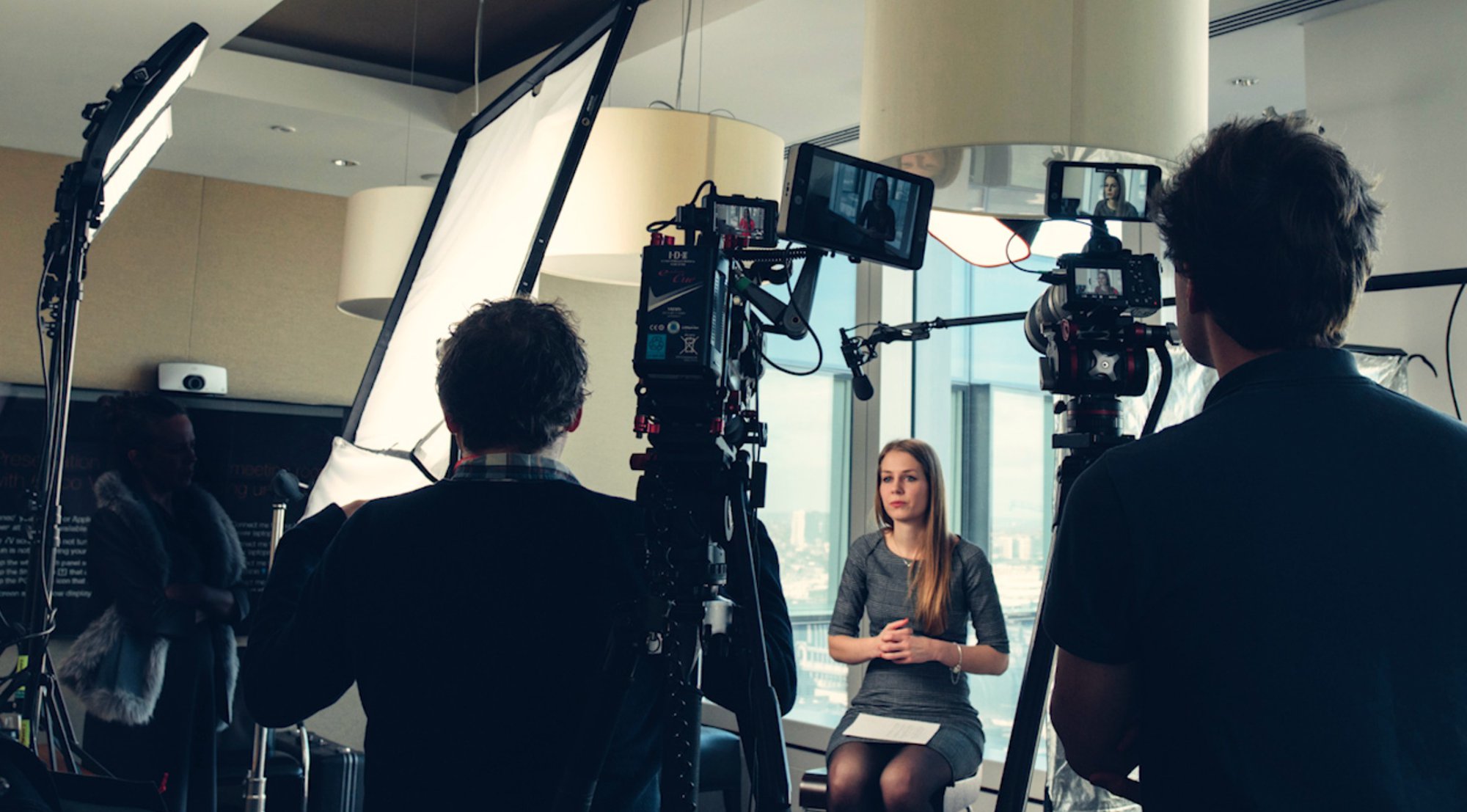Video content is the secret weapon that separates businesses that connect from those that get ignored.
In fact, 60% of potential customers won't even engage with your brand if you post low-quality videos.
Whether you're looking to tell your brand's story in a way that actually sticks, showcase a new product that gets people excited, or engage customers on social media without getting lost in the noise, nailing the video production process is essential to a video project that drives real results.
In this complete guide, we'll be taking a look at the following:
- Types of video content available
- How live and animated video production differs
- Best practices for making sure your videos reach your prospects
- Benefits of investing in professional services
By understanding the process involved in producing quality videos, you can ensure your investments in will pay off.
Production Services by Video Type

Production companies can provide a large variety of video types. These services support content distribution across various platforms, and can help achieve marketing and sales goals. Below we’ve highlighted several types that we know can make a big impact.
Event Videos
Event videos can take one of two forms. The first is a video produced in advance to promote or highlight something specific at the event, like a brand, process, achievement, or product. The second type of video is used to showcase the event itself and document it for future content.
Explainer Videos
An explainer video is a short, concise presentation that explains a complex topic or concept in an easy-to-understand way. These are commonly used to introduce your new product, service, or idea to the target audience in a way that quickly shows your value.
Promo Videos
A promo video is a short clip used to promote your product, service, event, or brand. It provides a sneak peek of the main offering and is commonly used on social media, websites, and as part of marketing campaigns.
Testimonial & Case Study Videos
Testimonial and case study videos feature a real-life customer or client sharing their positive experience using your product, service, or brand. They typically show the benefits, results, and impact your offering has had on the customer. They are commonly used to build trust and credibility with potential customers.
Training & Educational Videos
Training or educational videos provide instructions, information, and knowledge on a specific topic or subject. These are often used as corporate videos for employee onboarding, educational courses, and professional development, but can also be used for clients to setup, troubleshoot, or truly understand your product.
Company & Brand Videos
A company or brand video showcases your company, organization, or business and its values, culture, and vision. It is used to build brand awareness, increase engagement, and improve customer loyalty by generating an emotional connection with your brand.
Social Media Videos
Social media videos are designed to capture attention quickly and engage your prospects on platforms where content moves fast. These videos must be concise, visually captivating, and tailored to fit various aspect ratios to look great on any device.
The Production Process

What is The Process Like to Produce a Professional Video?
The video production process isn't just a checklist - it's your roadmap to creating content that actually connects and converts. Think of it as building a house: you need a solid foundation, the right construction, and those finishing touches that make everything shine.
This journey breaks down into three phases that'll take you from "I have an idea" to "I have a video that works."
It looks a little different, depending on whether you're going for live action (like a testimonial video or studio commercial), or an animated video (like a 2D explainer or 3D product demo). So let's break down both.
Live-Action Video
Live-action videos go into one of three categories: in studio (with actors, like for a commercial), on-site (like a culture video with your employees), and remotely captured (where it's real people, but minus the whole film crew).
No matter which route, the main production phases are largely the same.
Pre-Production
The real work occurs in the pre-production process well before the cameras start rolling. This is where the critical foundation is laid.
Pre-production focuses on both creative components and logistics. This is the time to develop initial concepts, refine ideas, craft compelling scripts, storyboard your vision, and figure out how to truly speak to your potential clients.
On the logistical side, every aspect of your video, from planning to filming to editing, is carefully crafted to ensure a perfect end result.
These components are vital to turning your ideas into exactly what you envisioned:
- Project Brief | Video Brief: This is a plan between you and the video production service provider you choose. It determines the objective of your video, defines your target market, establishes the overall tone, and plans optimizations to fit your method of delivery.
- Creative Direction | Art Direction: This process involves writing a script or preparing interview questions, storyboarding, set location and design, and shot lists that plan every scenes in your video.
- Resources | Sourcing: The technical logistics required including: scouting the location, getting necessary permits, assigning the right video crew, and renting and prepping equipment. (All the stuff that is a real headache to try to do yourself!)
Production
This is the heart and soul of producing a killer video. The production phase includes processes like setting up equipment, lighting, sound recording, and giving live creative direction.
The production team could be a few people or a ton of people, depending on the actual production itself. In either case, a well-organized team is essential to ensure all equipment and resources are prepared and coordinated for a smooth shoot.
Here are some of the key players on a production team:
- Producer | Video Producer: From concept to completion, they are a part of every phase of production. These steps include, but are not limited to, coordinating, supervising, managing the budget and talent, and acting as a liaison between the brand and the full production team.
- Creative Director: Oversees the creative vision of the video, guiding the artistic direction and ensuring the final delivery aligns with the brand’s message and goals.
- Director of Photography: Their mission is to help execute the director’s vision for the film. Not only do they oversee the camera and lighting departments, but they are also in charge of visually bringing your story to life.
- Field Audio Engineer: They use audio equipment to capture, mix, manipulate, and reproduce sounds and effects. They are responsible for the overall quality of the audio recording.
- Grip: They are responsible for setting up, operating, and breaking down the rigging and video equipment for the camera and lighting crew. They are also the technical problem solvers, using quickly addressing any challenges that arise during production.
Post-Production
The post-production phase is where the magic happens. It's where your footage is woven into a cohesive narrative.
These steps combine to create a completed, polished film that makes your time and investment feel truly worth the effort:
- Video editing: Video editors reviews all the footage and make necessary edits to craft a cohesive story. Clips are selected, trimmed, arranged, and adjusted to make a seamless storyline that meets your every expectation.
- Graphics, animations, and transitions: These are elements like titles and subtitles, visual effects, inserted graphics, and smooth transitions between scenes. They help to enhance the overall visual appeal and impact of your video.
- Voice-overs: Voice-overs record any additional narration, dialogue, or commentary in the post production phase that weren't captured on set during the production phase. It's added onto the visuals to provide additional context and information, ensuring the story is complete.
- Audio, Music & Sound Design: These elements helps create a mood, atmosphere, and emotional connection for your audience. Background music, sound effects, and other audio components can enhance the storytelling while removing background noise and fine tuning audio can give final polish.
- Color grading: Color grading is the process of manipulating the colors and tones of the footage to achieve your desired visual look, feel, or mood. Altering the brightness, contrast, saturation, and hue can all affect the overall style.
- Delivering files: This is where exporting the completed video in the required formats is done, and delivered to you digitally.

Animated Video
Animated video production follows the same production phases, but uses digital tools to craft stunning animated videos.
Complexity and creativity can both increase with animation! You can communicate complex ideas in a visually engaging manner. Animated video production services are great for explainer videos, promotional videos, website evergreen content, and more.
Here is an outline of the animated video production process.
- Concept: Preliminary framework that helps you envision, plan, and achieve the perfect video representation of your brand. It should clearly explain the story you want to tell, who you're telling it to, and how you want it told.
- Script: Script writers create a narrative based on your concept for the animators to design around. A great script not only communicates your message, but helps outline critical details like character actions, dialogue, and soundscapes.
- Style Frames: These frames provide a basic visual representation of how the final animation will look. They let you explore different designs, colors, characters, and overall style before animation begins.
- Storyboard: This is where artists sketch out your storyline to organize and visually plan the composition of each scene. Potential issues are addressed here, so changes can be made before the animation stage begins.
- Voiceover: Voiceover artists record narration or character dialogue that brings your script to life. This audio is synchronized with the animation during post-production to create a seamless and engaging viewing experience.
- Animation: This final phase of production is where all elements are combined by a talented animator. They add movement and special effects to your characters and scenes, ultimately forming a seamless animated film.
Video Production Best Practices

Here are some expert tips to ensure you end up with the most effective video for your business. Developing a comprehensive video strategy is essential to guide the entire production process and ensure your content aligns with your marketing goals. It's also important to adapt your videos for different platforms to maximize reach and engagement. By following these best practices, you can save money while maintaining high production quality.
1. Have A Solid Marketing Strategy
When you have a solid video strategy in place, you'll be much more likely to create videos that perform well in search engines and deliver exceptional value to your audience. To create a strong strategy, incorporate it into your overall marketing plan. Be sure to engage with the right audience to increase your brand awareness, customer retention, and revenue growth. Here are some ways to do that:
Define your video's intention.
Create a strategic plan for your video content by defining the objectives you want to achieve. By understanding your intention and purpose, you can focus your video efforts and maximize the impact of your content.
Your video goals should align with:
- Who your intended audience is
- Where they are in the buying process & what info they need at that moment
- Where you will be distributing your video
- What success metrics you want to achieve
2. Outline Timelines and Budget
Some pre-planning will ensure you can maximize your investment and ROI without having to reallocate time or money to get to the finish line.
Stick to timelines.
Video production is a lengthy series of check-ins, approvals, asset swapping, and updating. It can be quite a complex endeavor. A well planned timeline will keep your video production on track.
Stay on budget.
We've definitely seen production budgets spiral out of control from poor planning! That's why it's crucial to create a comprehensive video production budget with all the considerations and inclusions before you begin.
To avoid or understand unexpected costs, try our handy video budget calculator.
3. Plan on How You Can Get More From Your Video
A solid video should be more than a one-off asset; it should be the fuel for a full content library. From social cuts and GIFS, to web videos and infographics, planning all potential marketing uses at this stage can save you tons of time and money in the future. A solid team should be able to deliver a full package for significantly less than a creative agency after the fact.
More content assets mean:
- Extending a video’s lifespan & ROI
- Multiplying its impact by engaging your audience across multiple platforms.
For more ideas, read our article about effective ways to repurpose your videos and get the most from your video budget.
What Are The Benefits of Working With A Professional Video Production Team?

In a nutshell, professional video production services by a reputable company ensures you're working with a video production team that will streamline your process and ensure measurable results.
Here's where the real benefits are:
- Expertise - They have the honed tools and team to ensure you get exactly the style and look you need via a super streamlined process
- Experience - They have years of knowledge to share, from strategy and planning to best distribution methods, all that directly align with your industry, market and goals.
- Resources - They have a vast network of resources, from equipment to locations, and specialized services (like drone video or translations), and can make quick work of the long list of to-dos.
- Quality - You're going to get a high-quality, polished video from expert creatives and the best tools available
A Wrap on The Video Production Process
Professional video production services are a powerful tool for businesses looking to stand out from the competition and reach more customers.
By understanding the different types of videos available and best practices for the video production process - you can ensure high-quality results that pay off.
Leverage expert insights and relevant trends as a part of your strategy and make a lasting impact on your target audience.
Frequently Asked Questions (FAQs)
How do I choose the right video production company?
Look for experience, a strong portfolio, clear communication, and a trusted partner who manages all aspects of your video project from start to finish.
What’s the difference between live-action and animated videos?
Live-action films real people and settings for authentic storytelling; animated videos use digital tools to explain complex ideas visually.
How can I ensure my video reaches the right audience?
Integrate your video into a targeted digital marketing strategy across platforms like YouTube and social media, tailoring format and messaging for each.
What are common filming challenges and how to manage them?
Issues like lighting, noise, and talent availability can be managed with thorough pre-production planning and a skilled production team.
How much do video production services cost?
Costs vary by video type, schedule, equipment, and talent. Discuss your budget upfront for a clear estimate and to avoid surprises.
How do I measure video success?
Track key metrics like views, engagement, and conversions using analytics tools aligned with your video’s goals.









